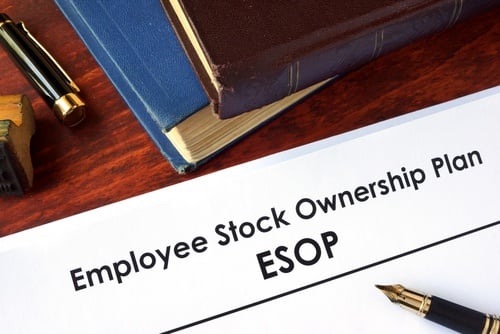
Five Reasons Why an ESOP Might Not be the Answer
It happens in cycles. ESOPs move in and out of favor as an option for business owners desiring to move onto the next phase of their lives. ESOPs seem too good to be true. ESOPS allow business owners to transition the company while creating a tax-favored treatment of the transaction and future tax reductions as the ESOP loan is being paid.
ESOPs are funded by corporate pretax contributions to the employee stock ownership trust. There can be annual discretionary cash contributions to buy shares each year, or the trust can borrow money to buy shares with the company making tax-deductible contributions to pay off the loan.
1. Difficult for Companies in Cyclical Businesses
ESOPs are best suited to companies that have stable revenue. Most ESOPs are leveraged using debt to finance the exit transaction for the selling shareholder. Highly cyclical companies are poor candidates for deeply leveraged transactions and can be harmed by lender demands in a downturn. Moreover, cyclical companies often need to lay off workers in a period of decline, requiring the company to buy back the shares in a time of low cash flow. Also, in periods of a downturn, an ESOP can be seen as a poor employee benefit when the stock price drops rapidly.
2. You May be Too Small to Make it Work
ESOPs typically cost $50,000-$150,000 to set up, depending on complexity and the size of the transaction. In addition, they can be costly to maintain on a yearly basis. For very small companies (typically under 10-15 employees), these costs may be greater than any potential tax benefits obtained by the ESOP. Furthermore, if the company is an S-corporation, rules aimed at preventing a small number of people from getting the bulk of the ESOP benefits may make an ESOP impossible even if all employees are in the plan because just by your very nature – you are a small business.
3. It Doesn’t Work if You Don’t Have a Successor in Place
ESOPs affect an internal liquidity transaction with no third-party buyer, which means there is no infusion of new entrepreneurship and management that you would get if you sold to an outside buyer. If the owner/key executive wants to retire soon, he or she will need a successor to run the company, handle the ESOP, and manage the related transaction debt. Sometimes, there is a successor in place but they don’t bring a lot to the table in terms of new management talent and energy. If there is no good successor immediately on the horizon, then an ESOP is not a good strategy.
4. It May Leave the Company Without Appropriate Working Capital
Because the loan created during the ESOP is paid with the company’s own cash flow, it can lead to a situation where you do not have cash available for strategically important needs or opportunities that may arise. Acquisitions, repairs, and maintenance all require cash. The obligation to pay off ESOP debt may come at the expense of pursuing opportunities that will make the company successful moving forward.
5. ESOPs Generally Provide a Lower Valuation than an Outright Sale
When an ESOP valuation is done, it is compiled using an assessment of values that approximate a fair market value. Using a competitive process led by any good intermediary can most times create value far in excess of the fair market value that is used by appraisers. However, the ESOP pays cash. Outside buyers sometimes offer to pay partly in cash and partly in an earnout. There may also be financing or personal contingencies on the sale (such as requiring the seller to stay or leave). A good investment banker can make sure that the final offer you receive does not have unnecessary strings attached, such as earnouts or seller financing – unless the valuation or situation supports it.

In any process where you are considering the sale of your business, it makes sense to look at all your options. An ESOP might sound like a great idea on paper, but when it comes to implementing the plan, it might not be a great fit for your business. TKO Miller can structure many of the ESOP benefits into a traditional sale and get a great valuation for the seller. It’s not always the case, but you should at the very least make sure you compare the two different outcomes before making the decision.